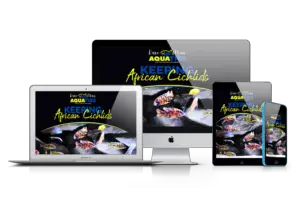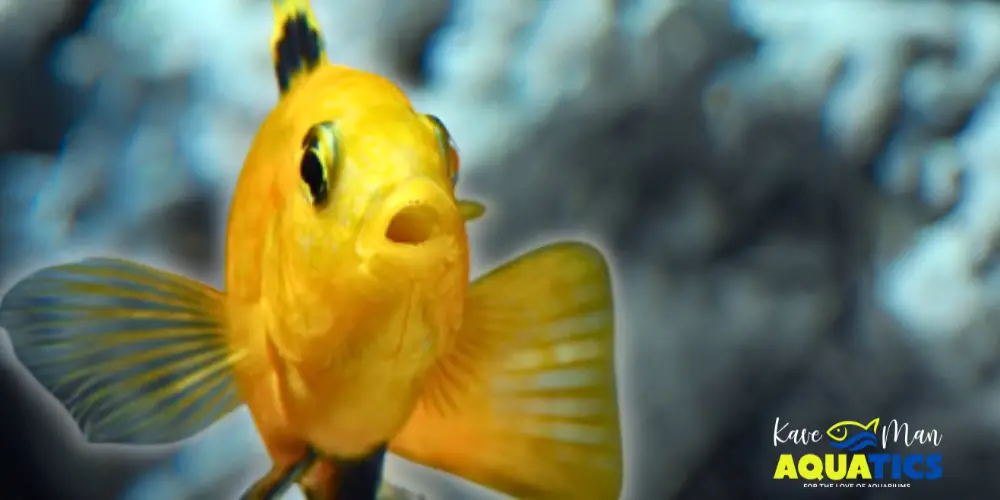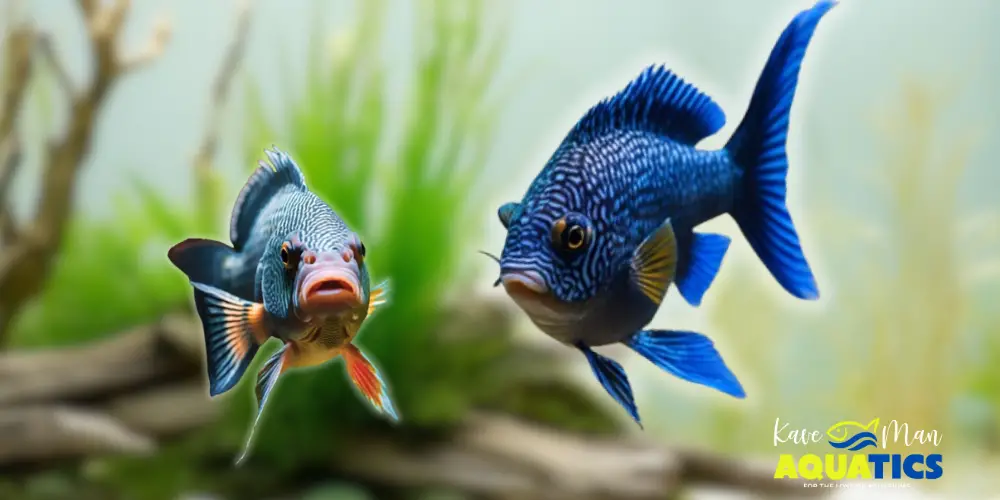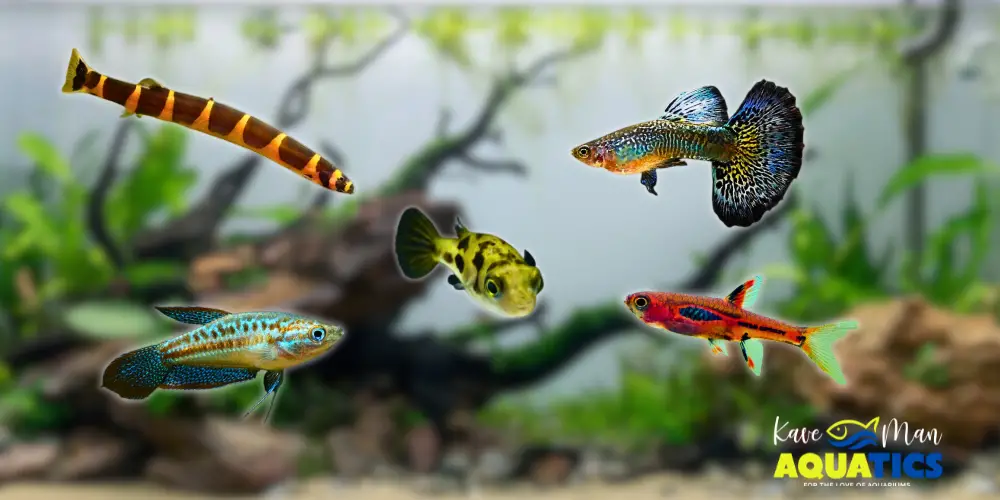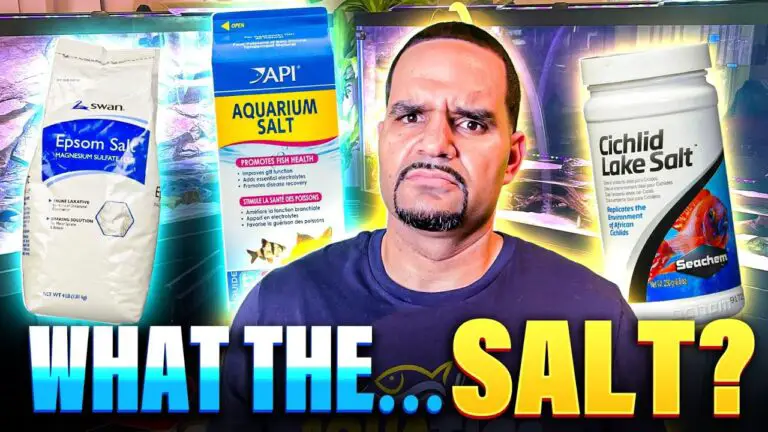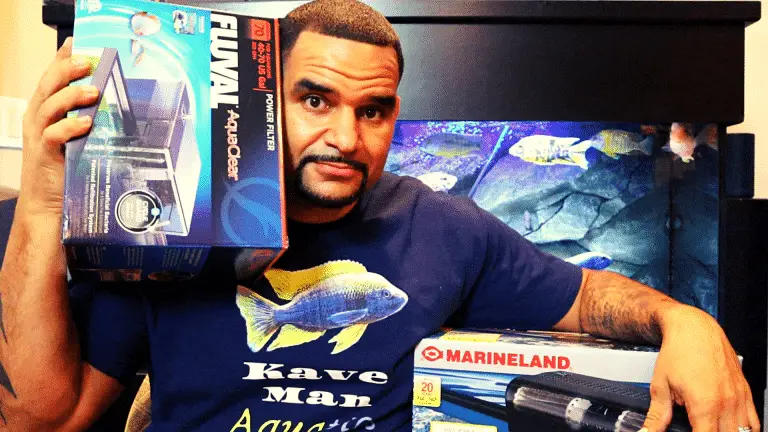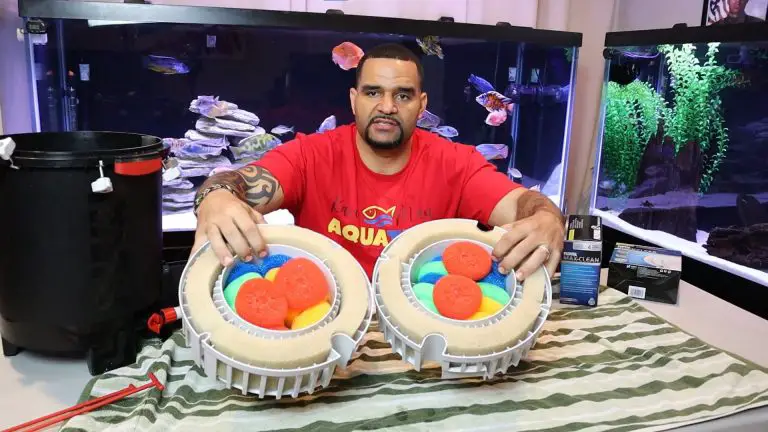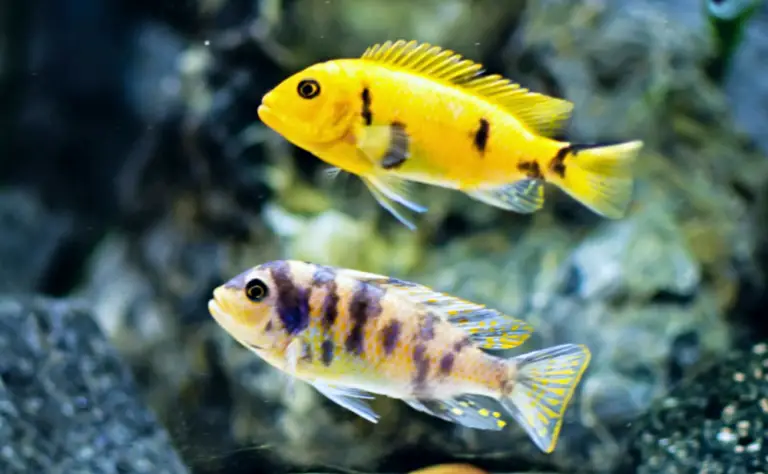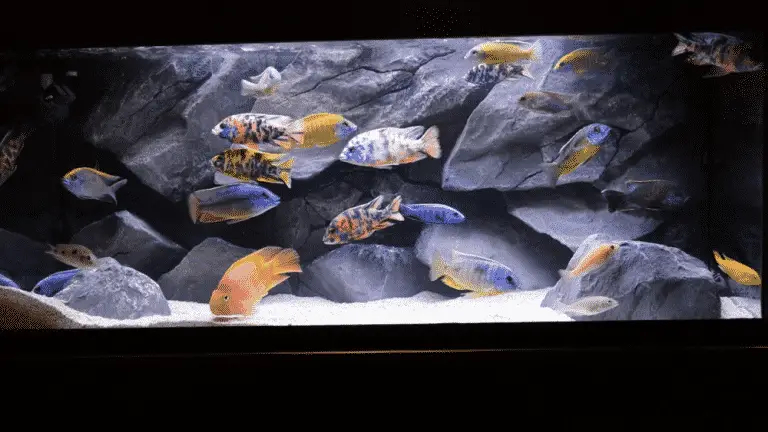2 Products to Replenish Nutrients in Your African Cichlid Tank
What does it take to build a healthy and thriving environment for your African cichlids? We all know the basics: water changes, tank maintenance, water testing, nutrient-dense diet, and more…
But how can they live in a thriving environment? How can you replenish nutrients in the tank? We’ll say it right now – you’ll only need two products: Seachem Cichlid Trace and Seachem Lake Salt.
Continue reading if you want to know more about how these two simple products can have a massive effect on your African cichlids and their environment. We’ll explain what you need to know and why you should consider adding them to your African cichlid tank.
How Do Nutrients Deplete In an Aquarium?
Let’s start with a fun fact that is the cornerstone of this article: Fish get their nutrients from the food they eat AND the water they swim in.
We keep our fishy friends in an enclosed system of water. It’s only natural that the nutrients get depleted through utilization, oxidation, and precipitation. So, how do we replenish these nutrients? Water changes! (Yes, water changes are not just for removing nitrates.)
However, water changes alone may not replenish all the nutrients our fish require. Subsequently, each and every water source is different. Unless you truly know what is in your water source, we bet that there are still some nutrients missing.
This is where Seachem Cichlid Trace and Seachem Cichlid Lake Salt come in.
How Seachem Cichlid Trace Can Replenish Nutrients
Cichlid Trace supplies a broad range of trace elements necessary for proper fish health and growth. By adding this product, you can effectively replenish nutrients in your cichlid tank.
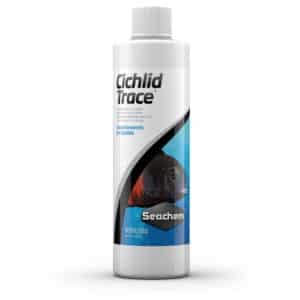
Dosing Cichlid Trace is fairly simple: When it’s time for a water change, you can dose this product afterward. The dosage instructions are on the bottle. However, you do need to make sure that you dose your entire tank’s amount of water during every water change.
If you have a bi-weekly or monthly water change schedule, we recommend you dose Cichlid Trace at least bi-weekly. Why? Remember, after each water change, your fish starts absorbing all the minerals and nutrients in the new water.
Now, Cichlid Trace is perfect for any type of cichlid, hence the name. But what about African cichlids specifically? How can we replenish their nutrients and maintain a thriving environment for them?
How Seachem Cichlid Lake Salt Helps Your Fish Thrive
Cichlid Lake Salt is best used for African cichlids. Why? This product also contains minerals that your African cichlids need. In addition, it also helps increase your water hardness. And as we all know, African cichlids should be kept in hard water and have higher pH levels.
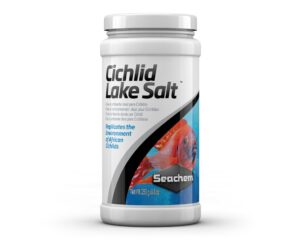
In case you didn’t know, we have a simple care guide for African cichlids that covers the basics that every owner should know.
Cichlid Lake Salt is a chemically sound blend of salts designed to replicate the natural environment of Rift Lake African Cichlids.
Because normal water sources in the United States (US) are generally neutral, we need to manipulate the water to mimic the hard brackish water of the African lakes.
Quick disclaimer: Although the African cichlids you own may have never been in the African Lakes and have been store-bred, that doesn’t change millions of years of evolution and genetics.
These fish have the color they have because of the salty brackish water that their ancestors came from. So yes, they’ll do fine in whatever pH level you have, but fine isn’t enough for KaveMan Aquatics – we want our fish to thrive!
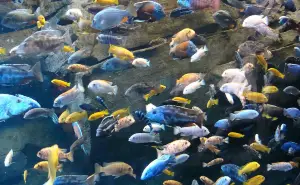
For African cichlids that originate from Lake Malawi, we recommend a pH level between 7.6 – 8.4. And for African cichlids that originate from Lake Tanganyika, we recommend a pH level between 7.8 – 9.0.
While we advocate natural methods to raise your pH levels using aragonite sand or crushed coral as substrate, adding Cichlid Lake Salt will help complement the buffering power. This allows the substrate to last much longer before depleting all of its minerals.
However, if you don’t use a natural source to raise your pH levels, the next best thing is to use one of Seachem’s buffering products (they have a buffer for each lake), such as Seachem Malawi Buffer (for Lake Malawi fish).
Dosing Cichlid Lake Salt is also fairly easy: When it’s time for a water change, you can dose this product afterward. The dosage instructions are on the bottle. However, when adding this product, only add the amount you need for the amount of water that has been changed.
For example: If you do a 50 gallon water change, you dose only 50 gallons.
Seachem Cichlid Trace vs. Seachem Cichlid Lake Salt
Many people may think that these two products are the same thing. However, when comparing their nutritional values, each one has minerals that the other is missing.
Looking at the labels of both products:
- Both have Calcium, Magnesium, Potassium, Iodine, and Iron (each product has different amounts of each).
- As a result of the higher concentration of these minerals in Cichlid Lake Salt, it helps with hardening the water (while Cichlid Trace doesn’t).
- The key difference between these two is the fact that Cichlid Lake Salt has both Aluminum and Sodium Chloride (Salt), where Trace doesn’t.
The same active ingredient is in aquarium salt. It’s named lake salt because it has mineral and actual salt.
We know it’s a touchy subject in the hobby whether using salt for freshwater fish is beneficial to them or not, but hear us out. If you’re against using aquarium salt for your freshwater fish, but you use Cichlid Lake Salt… Let us be the first to tell you that it’s the same thing!
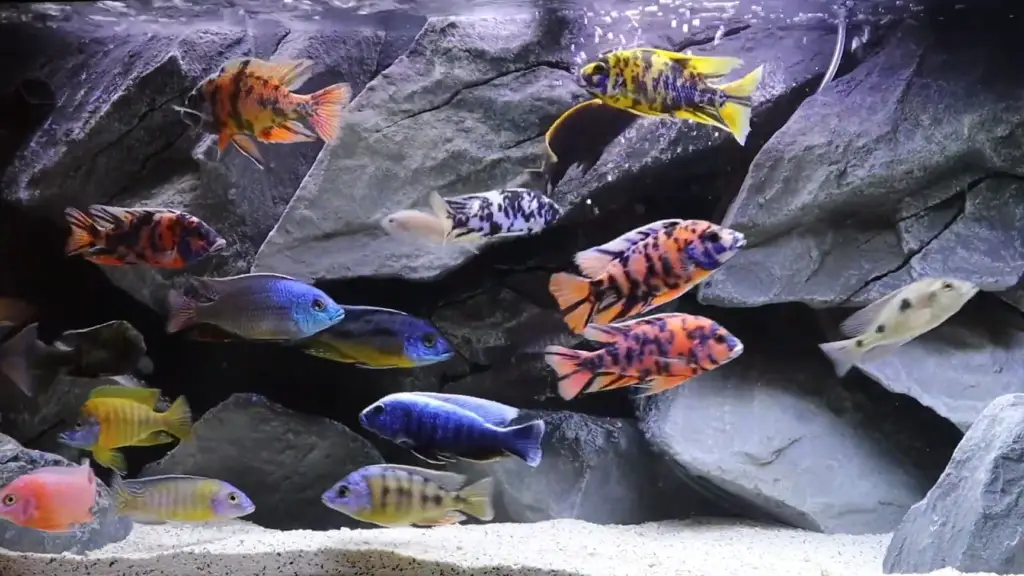
So you may think that Cichlid Lake Salt is better than Cichlid Trace, so why use Cichlid Trace? Well, it contains Copper, Fluorine, Manganese, Selenium, and Zinc. Although it’s in trace amounts, these are all elements necessary for proper fish health and growth.
For those reasons alone, this is why we use both products and why we recommend you to use them too. You get the best of both worlds! This way, you know that your fish get everything they need to thrive in a healthy environment.
Conclusion
Building a thriving environment that replenishes nutrients in your African cichlid tank is much easier than you thought. By incorporating these two products into your water-changing schedule, you’ll be rewarded with a tank full of happy, healthy, and thriving African cichlids.
We have numerous resources such as African cichlid articles and a dedicated African cichlid YouTube playlist (for that binge-worthy content).
KaveMan Aquatics also offers an online video course, Keeping African Cichlids. If you feel that that’s not enough, we also offer 1-on-1 consulting services for that personal touch.
-
African Cichlid Color Fading: 5 Reasons Why It Happens and Best Ways to Fix It!
Is your tank less vibrant than before? African cichlid color fading happens. The good news? You can fix it — learn how!
-
African Cichlid Aggression: How to Manage and Prevent Fights
Struggling with African cichlid aggression? Learn how to manage and prevent it with this simple guide. Build a thriving tank with Aquabuildr!
-
Best Fish for a Small Tank: Ideal Species for Limited Space
Love to own fish but have limited space? No problem! Check out this list of the best fish for a small tank. The Aquabuildr app is here to help!


